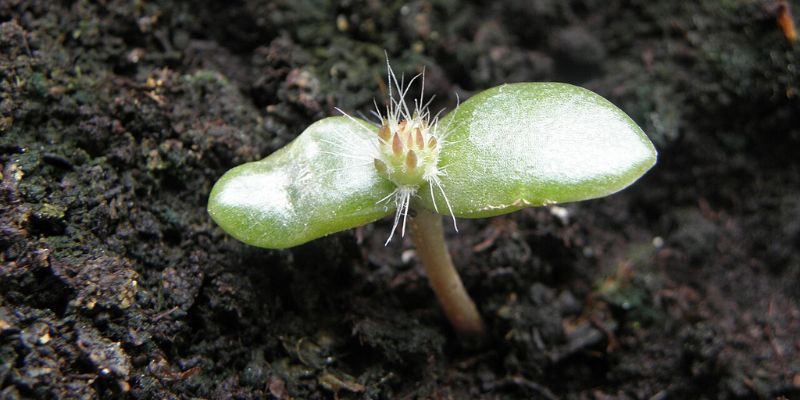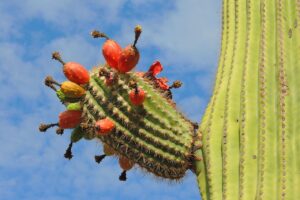Prickly pear cactus, scientifically known as Opuntia, is a succulent plant renowned for its distinctive appearance and robust adaptability. Found primarily in arid and semi-arid regions, this cactus not only serves as a striking landscape feature but also bears delicious fruit. Understanding its growth rate can provide insights for gardening enthusiasts, agricultural applications, and those interested in sustainable practices.
When delving into the growth rate of prickly pear cactus, several factors come into play, including environmental conditions, care practices, and specific species variations. As a resilient plant, prickly pear exhibits impressive growth patterns under favorable circumstances, making it a favorite among succulent cultivators.
In this article, we will explore the various aspects influencing the growth rate of prickly pear cactus, how to cultivate it optimally, and potential uses of this remarkable plant.
Growth Rate Dynamics: What to Expect
Prickly pear cacti typically exhibit a moderately fast growth rate, particularly in their early years. Under ideal conditions, these plants can grow between 12 to 24 inches per year. Factors affecting this growth rate include soil quality, moisture levels, temperature, and light exposure.
Soil Quality:
Optimal soil for prickly pear should be well-draining and sandy. Cacti are susceptible to root rot if waterlogged, which can severely hinder their growth. Incorporating organic matter can enhance soil fertility but requires careful balance to ensure proper drainage.
Moisture Levels:
Unlike many plants, prickly pear thrives with minimal watering. It stores moisture within its pads, allowing it to withstand drought conditions. However, during the growing season, a little extra water can stimulate growth, especially if applied judiciously.
Temperature:
Prickly pear cacti prefer warm climates. In regions where temperatures consistently reach 70°F to 100°F, growth is optimal. While these cacti can withstand occasional cooler temperatures, persistent cold can stunt growth or even kill the plant.
Light Exposure:
Full sun exposure is crucial for maximum growth. Ideally, prickly pear should receive at least six hours of direct sunlight daily. Insufficient light can lead to elongated growth, causing the pads to stretch out, compromising the plant’s structural integrity.
Seasonality and Growth Patterns
Understanding the seasonal growth patterns of prickly pear is essential for successful cultivation. These plants are generally active during the warmer months, particularly in spring and summer. During this period, they undergo their most vigorous growth phase, developing new pads and, in some instances, producing flowers.
Spring Awakening:
As temperatures rise in spring, prickly pear cactus begins to emerge from its winter dormancy. This period presents an opportunity for gardeners to prune the cactus lightly. Removing dead or damaged pads can encourage new growth and help maintain the plant’s shape.
Flowering and Fruit Development:
Flowering typically occurs from late spring to early summer. Once pollinated, the flowers give way to fruit, commonly referred to as ‘tunas.’ These vibrant fruits not only add aesthetic value to your garden but are also edible and rich in nutrients.
Fall and Winter Dormancy:
As temperatures drop, prickly pear enters a dormancy period. During this time, growth significantly slows, and the plant conserves its energy. It is vital to reduce watering during this phase to prevent root rot.
Cultivation Techniques for Optimal Growth
To ensure the prickly pear cactus reaches its full potential, certain cultivation techniques are recommended. These practices will help mitigate common issues that can negatively impact growth.
Proper Watering:
Understanding the specific watering needs of prickly pear is crucial. During the growing season, a biweekly watering schedule is generally suitable; however, it’s essential to check the humidity of the soil. Allowing the soil to dry out between waterings will promote healthy root development.
Fertilization:
Fertilizing prickly pear can enhance its growth rate. A diluted cactus fertilizer during the growing season can provide essential nutrients without overwhelming the plant. Be cautious not to over-fertilize, as this can lead to excessive, weak growth.
Pest Management:
While prickly pear is relatively resistant to pests, it can occasionally attract mealybugs and scale insects. Regularly inspecting the cactus for signs of infestation and gently cleaning the pads with a soft brush can prevent significant damage.
Common Uses of Prickly Pear Cactus
Beyond its ornamental value, prickly pear cactus serves numerous practical purposes. The pads, or nopales, are commonly consumed in various culinary dishes, especially in Mexican cuisine. They are rich in fiber and nutrients, providing a healthy addition to meals.
The fruit, or tunas, is not only delightful but is also turned into jellies, beverages, and candies. Additionally, prickly pear has medicinal properties; it has been traditionally used to manage diabetes, inflammation, and even hangovers.
In conclusion, understanding the growth rate of prickly pear cactus is essential for any enthusiast looking to cultivate this remarkable plant. With the right conditions and care practices, your prickly pear can thrive, contributing both beauty and utility to your garden. Observing its unique growth patterns and adapting your cultivation techniques accordingly will lead to a successful harvest of both pads and fruit, enhancing your culinary and gardening experiences.





Leave a Comment